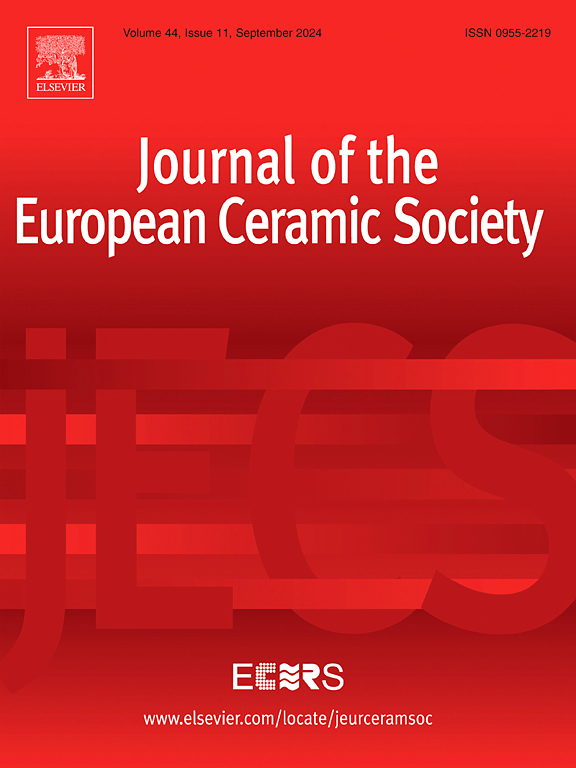Impact of ceramic membrane pore size and metal oxide modifications on pharmaceutical degradation in a Hybrid Ozonation–Membrane Filtration reactor
IF 6.2
2区 材料科学
Q1 MATERIALS SCIENCE, CERAMICS
Journal of The European Ceramic Society
Pub Date : 2025-06-21
DOI:10.1016/j.jeurceramsoc.2025.117635
引用次数: 0
Abstract
This study investigates the integration of catalytic ozonation with membrane filtration using ceramic membranes to enhance pharmaceutical’s removal. Ceramic membranes with four MWCOs and pore size (50 kDa, 150 kDa, 300 kDa, and 200 nm) were modified via a sol-gel vacuum infiltration method with CeO₂, CeTiOx, and a dual-layer CeO₂+CeTiOx coating to promote ozone activation and hydroxyl radical (●OH) generation. Continuous-flow Hybrid Ozonation–Membrane Filtration (HOMF) experiments demonstrated that dual-layer modifications significantly enhanced degradation rates of carbamazepine, diclofenac, ibuprofen, and pCBA, with lower MWCO membranes exhibiting higher adsorption and retention. Scavenger tests using tert‑butanol confirmed the critical role of ●OH, while SEM, AFM, XRD, and MIP characterization revealed substantial changes in surface morphology and pore structure. This study is the first to systematically examine the interactions between ultrafiltration and microfiltration ceramic membranes with varying MWCO and tailored surface modifications, providing novel insights for optimizing catalytic ozonation for pharmaceutical degradation in water treatment.
陶瓷膜孔径和金属氧化物改性对混合臭氧-膜过滤反应器中药物降解的影响
本文研究了陶瓷膜催化臭氧氧化与膜过滤相结合,以提高药物的去除率。采用溶胶-凝胶真空浸渍法对孔径分别为50 kDa、150 kDa、300 kDa和200 nm的4种MWCOs陶瓷膜进行了CeTiOx、CeTiOx和CeTiOx双层涂层的改性,以促进臭氧活化和羟基自由基(●OH)的生成。连续流混合臭氧-膜过滤(HOMF)实验表明,双层改性显著提高了卡马西平、双氯芬酸、布洛芬和pCBA的降解率,并且低MWCO膜具有更高的吸附和保留率。利用叔丁醇进行的清道夫测试证实了●OH的关键作用,而SEM、AFM、XRD和MIP表征显示了表面形貌和孔隙结构的实质性变化。该研究首次系统地研究了具有不同MWCO和定制表面修饰的超滤和微滤陶瓷膜之间的相互作用,为优化水处理中催化臭氧化用于药物降解提供了新的见解。
本文章由计算机程序翻译,如有差异,请以英文原文为准。
求助全文
约1分钟内获得全文
求助全文
来源期刊

Journal of The European Ceramic Society
工程技术-材料科学:硅酸盐
CiteScore
10.70
自引率
12.30%
发文量
863
审稿时长
35 days
期刊介绍:
The Journal of the European Ceramic Society publishes the results of original research and reviews relating to ceramic materials. Papers of either an experimental or theoretical character will be welcomed on a fully international basis. The emphasis is on novel generic science concerning the relationships between processing, microstructure and properties of polycrystalline ceramics consolidated at high temperature. Papers may relate to any of the conventional categories of ceramic: structural, functional, traditional or composite. The central objective is to sustain a high standard of research quality by means of appropriate reviewing procedures.
 求助内容:
求助内容: 应助结果提醒方式:
应助结果提醒方式:


